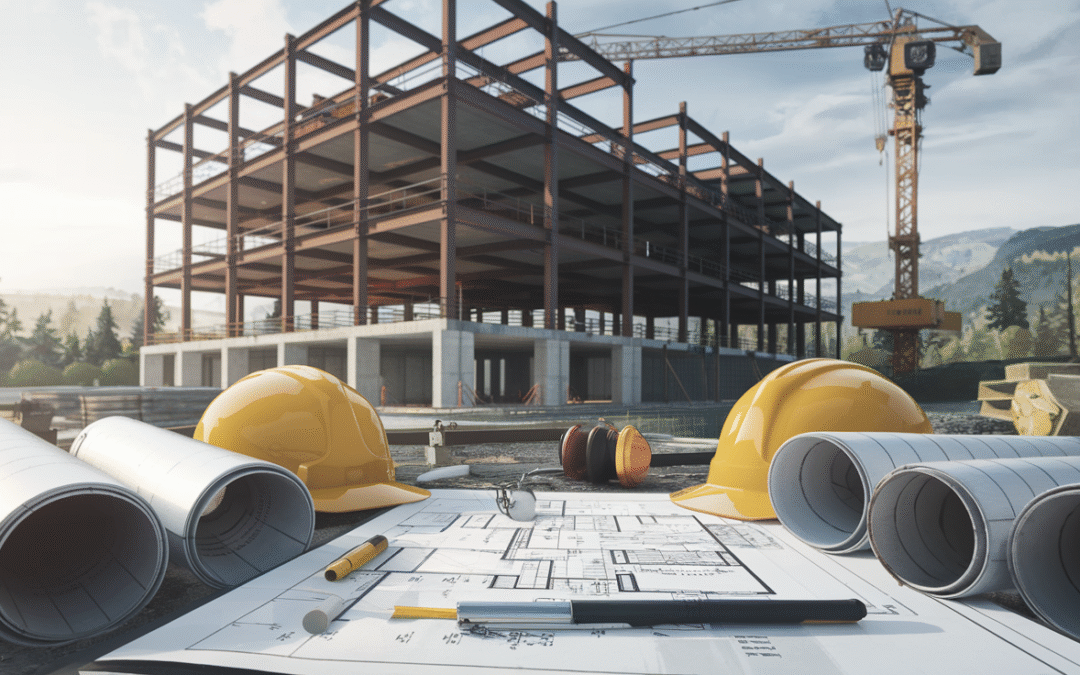Preparing Commercial Buildings for Seismic Events
Commercial structures in regions like the Bay Area must prioritize seismic commercial building design to ensure safety and functionality during earthquakes. Given the inevitable seismic activity in California, businesses need proactive strategies to safeguard their assets and clientele. This article delves into essential considerations for property developers, investors, and decision-makers aiming to enhance commercial buildings’ resilience to seismic events.
Table of Contents
- Understanding Seismic Factors
- Best Practices in Seismic Design
- iBuild’s Seismic Design Approach
- Real-World Scenarios
- Conclusion
- Get Started with iBuild
Understanding Seismic Factors
Earthquakes pose significant risks to structural integrity, especially in areas prone to seismic activity like the San Francisco Bay Area. Key factors influencing seismic design include ground motion, soil conditions, building materials, and structural design methodologies. Engineering solutions must incorporate these variables to mitigate potential damage and ensure occupant safety.
Ground Motion Considerations
Ground motion is a critical factor in seismic commercial building design, affecting how buildings react during an earthquake. Engineers must evaluate historical seismic data alongside predictions for future activity to anticipate the forces acting on structures. Incorporating dampers and isolators can help absorb and distribute these forces, reducing damage.
Soil Conditions and Foundation Design
Understanding soil conditions is vital when designing earthquake-resistant structures. Soil can amplify seismic waves, potentially leading to increased building sway and damage. Advanced geotechnical studies provide insights into soil properties, enabling architects to design foundations that bolster structural stability. iBuild’s site analysis services can play a pivotal role in gathering this data.
Material Selection
Materials used in construction significantly influence a building’s seismic performance. Employing flexible materials like steel and engineered wood can enhance a building’s ability to withstand seismic forces due to their inherent elasticity. Additionally, reinforced concrete with rebar enhances ductility, providing a balanced approach to design.
Best Practices in Seismic Design
Implementing best practices in seismic design ensures that commercial properties maintain safety and function during and after an earthquake. These practices include adhering to updated building codes, regular inspections, and proactive maintenance.
Compliance with Seismic Codes
Adherence to up-to-date seismic codes is crucial for ensuring safety and legal compliance. In California, the California Office of Emergency Services provides guidelines and parameters for seismic design. Ensuring compliance not only enhances safety but also mitigates potential liabilities.
Regular Structural Assessments
Regular inspections and maintenance are vital in detecting and addressing potential vulnerabilities in seismic commercial building design. Proactive measures, including retrofitting outdated structures, can fortify existing buildings against earthquakes.
Advanced Seismic Technologies
Integrating advanced technologies like base isolation systems and energy dissipation devices is becoming standard in seismic design. These innovations help absorb and redistribute seismic forces, reducing the risk of damage and enhancing overall resilience.
iBuild’s Seismic Design Approach
iBuild Design and Construction employs a comprehensive approach to seismic commercial building design. With an architect-led model, iBuild ensures that every aspect of design and construction is aligned with safety and aesthetic objectives.
Integrated Design-Build Methodology
iBuild’s design-build methodology uniquely positions them to execute projects that seamlessly blend architectural vision with structural integrity. This approach minimizes project risks and accelerates timelines, ensuring both design quality and earthquake resilience.
Custom Solutions Driven by Data
iBuild conducts meticulous feasibility studies and applies data-driven strategies to tailor seismic solutions for each project. Whether it’s a grocery store, office, or retail environment, iBuild’s teams are adept at integrating client needs with local seismic requirements.
Real-World Scenarios
Consider a property developer planning to build a new office complex in San Mateo. Engaging with iBuild early in the process allowed them to conduct thorough site surveys that revealed unique soil conditions. Leveraging these insights, iBuild designed a robust foundation system that reduced potential seismic risks by 40%, resulting in a safer environment for future tenants.
In another instance, a retail chain sought iBuild’s expertise to retrofit its San Rafael store, enhancing compliance with the latest seismic standards. The project not only improved the building’s structural resilience but also increased customer confidence, ultimately leading to a 20% surge in foot traffic post-renovation.
Conclusion
Preparing commercial buildings for seismic events is a necessity in earthquake-prone areas like the Bay Area. By understanding seismic factors, adhering to best practices, and employing expert firms like iBuild, businesses can secure their investments and ensure the safety of their occupants. Technical innovation and strategic design are key to achieving earthquake-resilient commercial properties.
Get Started with iBuild
Are you ready to enhance the seismic resilience of your commercial building? Partner with iBuild Design and Construction today. With their architect-led design-build model and commitment to excellence, iBuild is well-equipped to tackle the challenges of seismic design. Schedule a consultation to discuss your project goals and receive expert guidance on creating safer, structurally sound commercial spaces in the Bay Area.

